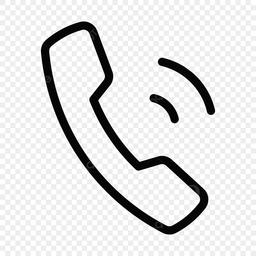
Cardboard Baling Wire
Baling Wire Direct provides the world's best baling wire products for the cardboard recycling industry

Galvanized wire

Single loop

Hi tensile

Galvanized wire

Single loop

Hi tensile

Galvanized wire

Single loop

Galvanized wire

Single loop
High-quality baling wire for cardboard recycling
We offer galvanized stem wire, annealed wire (in box or stem), and bale ties for cardboard baling. Our wire products are tailored to the needs of cardboard and OCC baling. They are engineered and manufactured to the highest quality standards in the USA.
When we manufacture our baling wire, we leave nothing to chance. Every step of our manufacturing process is done to the highest quality standards in the USA. From raw materials through the annealing process to quality testing, every stage of the manufacturing life cycle is done to rigorous protocols.
It all starts with a select family of melting plants where we purchase 100% Americanmade steel billets. Each is delivered with metallurgical traceability specs certifying chemical composition to meet the end product’s load and tensile strength.
From there our 125-person production staff and five onsite engineers get to work.
First, the newly formed carbon steel wire is descaled through mechanical reverse bending. This gives a completely scale-free surface. Even better, mechanical descaling means we eliminate harsh, environmentally unsafe chemicals from the production process.
Next, the wire is drawn through a heavy-duty, bullblock continuous wire machine, and low carbon (1018) grades are air-cooled to ensure consistent tensile strength
While some suppliers (especially those who don’t control the manufacturing process) may manipulate wire gauge and weight to cut corners or inflate shipping costs, we take a different approach. Our dedication to quality control is unwavering, and we meticulously test our wire to ensure it performs to the highest industry standards.
Our quality control process begins with tensile testing samples from every carrier, pushing them to their breaking point. Any carriers with failed wires are immediately removed, ensuring only the strongest and most reliable carrier wire gets shipped.
To make your experience seamless, our Autoship™ system keeps you informed every step of the way. You'll receive tracking information via your preferred contact method (email, text message). The entire process takes just 13 business days.
With our set-and-forget reordering and invoicing, you'll get exactly what you need, when you need it, without sacrificing USA quality or customer service.
About the OCC and cardboard recycling industry
Old corrugated containers (or old corrugated cardboard—abbreviated OCC), is a widely recycled material, with significant environmental and economic benefits. Baling Wire Direct is proud to support cardboard recycling. Here are some key facts, figures, and statistics about cardboard and OCC recycling
OCC recycling adoption
OCC is the most recycled packaging material in the US.
- Approximately 80% of products sold in the United States are packaged using cardboard
- Around 51% of OCC is used to make new corrugated board, while 11.5% is used for boxboard materials, such as cereal boxes.
- Approximately 32% of recycled OCC is exported.
- The American Forest & Paper Association (AF&PA) reported a cardboard recycling rate of 93.6% in 2022, a 2.4% increase from 91.4% in 2021. However, some industry analysts argue that the OCC recycling rate may be lower, around 67.44% or even 69.1%, due to differences in methodology and data interpretation.
- The overall paper recycling rate in 2022 was 67.9%, a slight decrease from 68% the previous year.
- In Michigan, the recycling rate has risen 35.4%, from 14.25% prior to 2019 to 19.3% in 2022.
Cardboard recycling challenges
While cardboard is easier to recycle than other materials such as e-waste, there are some challenges.
- One of the main challenges in recycling OCC is ensuring that the material is kept dry and clean, and that all nonpaper materials such as bubble wrap, wood skids, plastic bags, plastic wrapping, and Styrofoam are removed.
- Contamination from things like plastic envelopes, tape, food residue, and oils makes OCC difficult to recycle, leading to increased waste and materials being landfilled instead.
- Difficulty accurately sorting wax-coated OCC (WCC) from unwaxed OCC leads to WCC often being landfilled, resulting in lost recycling revenue and increased waste disposal costs.
- Processing issues like paper jams and machine shutdowns caused by hot melt adhesives used in cardboard packaging disrupt recycling operations and efficiency.
- Toxic chemicals used in the recycling process, if not properly managed and disposed of, can lead to environmental and human health hazards.
- Market factors such as low demand and declining prices for OCC (currently at 25-year lows) reduce incentives to collect and recycle cardboard.
Our cardboard baling wire sizes
We offer a range of gauges for OCC baling. Our products are compatible with a range of baling machinery, including vertical and horizontal balers.
Gauge is a standard way of sizing cardboard baling wire. Gauge is inverse to diameter, meaning that a higher gauge corresponds with a thinner wire, and vice versa.
- Our hi-tensile galvanized baling wire comes in 11 and 12 gauge.
- Our regular galvanized baling wire comes in 11, 12, 13, and 14 gauge.
- Our black annealed baling wire comes in 9, 10, 11, and 12 gauge.
- Our single and double loop bale ties come in 9, 10, 11, 12, 13, and 14 gauge (with half sizes available in select products)
Cardboard baling wire categories
We make a wide range of cardboard baling products. Order bulk quantities of box wire, stem wire, or bale ties. Click on any category to learn more
Single loop bale ties
Choose from black annealed or galvanized finish
Double loop bale ties
Choose from bright or galvanized finish.
Annealed wire (box)
Annealed for ductility. 50 and 100 lb boxes.
Annealed wire (stem)
Annealed for ductility. Average 1330 lbs per stem
Galvanized stem wire
Class 3 hot-dip galvanization for long-lasting performance
Hi-ten carrier wire
High tensile strength for demanding applications.
Cardboard Baling Wire FAQ
Didn't find your answer?
Our team is just an email away and ready to answer your questions
















